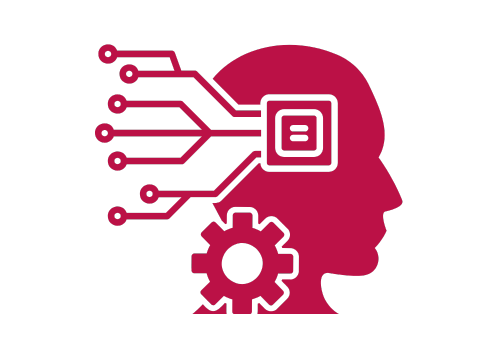Effective Communication and Presentation
Empower Your Voice, Elevate Your Impact
Why This Training?
In today's interconnected and fast-paced world, the ability to communicate effectively and present ideas persuasively is more crucial than ever. Whether pitching an idea, leading a team, or interacting in daily life, your ability to express yourself clearly and confidently determines the influence you have on others. This training is designed to hone those very skills, transforming you from a passive communicator to a compelling speaker and presenter
Duration: 6 Hours (online / virtual live session)

Who Should Attend?
Professionals who regularly interact with clients or stakeholders
Team leads and managers aiming to better guide their teams
Team leads and managers aiming to better guide their teams
See more
Educators and trainers
Anyone wishing to improve their personal and professional communication and presentation skills
Anyone wishing to improve their personal and professional communication and presentation skills

Course Highlights
Mastering the Fundamentals: Dive deep into the essence of communication, understanding its significance and consequences.
Interactive Activities: Engage in hands-on tasks from storytelling exercises to presentation role-plays, ensuring practical learning.
Interactive Activities: Engage in hands-on tasks from storytelling exercises to presentation role-plays, ensuring practical learning.
See more
Overcoming Barriers: Identify and break down common communication barriers for clearer connections.
Powerful Presentations: From structure to design elements, become adept at creating and delivering impactful presentations.
Conquering Fears: Learn techniques to combat presentation anxieties and communicate with confidence.
Feedback Loop: Embrace the continuous improvement mindset through constructive feedback mechanisms.
Powerful Presentations: From structure to design elements, become adept at creating and delivering impactful presentations.
Conquering Fears: Learn techniques to combat presentation anxieties and communicate with confidence.
Feedback Loop: Embrace the continuous improvement mindset through constructive feedback mechanisms.

Pre-requisites
A willingness to actively participate and engage in group activities.
An open mindset to learn, make mistakes, and iterate.
An open mindset to learn, make mistakes, and iterate.
Training Materials Needed by Participants
A notebook or digital device for taking notes.
Any past presentation materials or examples they wish to discuss or improve upon (optional).
A short write-up (about a paragraph) on a topic of their choice to be used in communication exercises.
Write your awesome label here.
Training Content
Effective Communication and Presentation
Session 1: Foundations of Effective Communication & Crafting Messages
Introduction to Effective Communication
- Why communication matters in personal and professional settings
- Real-life consequences of poor communication
Understanding Communication Styles
- Recognizing different styles of communication
- Adapting to your audience's preferred style
Active Listening: More Than Just Hearing
- Principles of active listening
- Role-playing activity: Demonstrating the difference between listening and hearing
Barriers to Effective Communication
- Common barriers and how to overcome them
- Group activity: Identifying barriers in sample scenarios
The Art of Storytelling in Communication
- Elements of a compelling story
- Activity: Crafting a short story related to a given topic
Ensuring Clarity and Conciseness
- Tips for clear and concise messaging
- Activity: Refining verbose messages
Understanding Non-verbal Communication
- The role of body language, tone, and facial expressions
- Activity: Guessing the message through non-verbal cues
Feedback Mechanisms and Their Importance
- Ensuring your message has been understood correctly
- Techniques for soliciting feedback
Session 2: Presentation Skills & Handling Challenges
The Power of Presentations
- Why presentation skills are crucial
- Notable public speakers and their impact
Structuring Your Presentation
- The importance of flow and organization
- Crafting an engaging introduction and conclusion
Design Elements in Presentations
- Effective use of visuals, charts, and slides
- Hands-on activity: Designing a sample slide
Engaging and Captivating Your Audience
- Techniques to capture and maintain audience interest
- Activity: Presenting a topic using audience engagement techniques
Handling Q&A Sessions
- Strategies for answering difficult questions
- Role-play activity: Handling challenging questions during a presentation
Overcoming Presentation Anxieties
- Common fears and how to address them
- Techniques for calming nerves before and during a presentation
Feedback and Continuous Improvement
- Importance of post-presentation feedback
- Activity: Giving constructive feedback on sample presentations
Wrap-up and Key Takeaways
- Reiterating the importance of communication and presentation
- Encouraging continuous practice and improvement
WOMEN AI ACADEMY
Women AI Academy is a gender-equality and technology driven learning & development organization
Site Terms & Info
ETHOS AI Training & Consulting GmbH
Weihenstephanerstr.1281673
Munich-Germany
We are driven by the vision of making AI both ethical and accessible to everyone
Copyright © 2024 Brought to you by Ethos ai AI Training & Consultancy GmbH
Ali Hessami is currently the Director of R&D and Innovation at Vega Systems, London, UK. He has an extensive track record in systems assurance and safety, security, sustainability, knowledge assessment/management methodologies. He has a background in the design and development of advanced control systems for business and safety-critical industrial applications.
Hessami represents the UK on the European Committee for Electrotechnical Standardization (CENELEC) & International Electrotechnical Commission (IEC) – safety systems, hardware & software standards committees. He was appointed by CENELEC as convener of several Working Groups for review of EN50128 Safety-Critical Software Standard and update and restructuring of the software, hardware, and system safety standards in CENELEC.
Ali is also a member of Cyber Security Standardisation SGA16, SG24, and WG26 Groups and started and chairs the IEEE Special Interest Group in Humanitarian Technologies and the Systems Council Chapters in the UK and Ireland Section. In 2017 Ali joined the IEEE Standards Association (SA), initially as a committee member for the new landmark IEEE 7000 standard focused on “Addressing Ethical Concerns in System Design.” He was subsequently appointed as the Technical Editor and later the Chair of P7000 working group. In November 2018, he was appointed as the VC and Process Architect of the IEEE’s global Ethics Certification Programme for Autonomous & Intelligent Systems (ECPAIS).
Trish advises and trains organisations internationally on Responsible AI (AI/data ethics, policy, governance), and Corporate Digital Responsibility.
Patricia has 20 years’ experience as a lawyer in data, technology and regulatory/government affairs and is a registered Solicitor in England and Wales, and the Republic of Ireland. She has authored and edited several works on law and regulation, policy, ethics, and AI.
She is an expert advisor on the Ethics Committee to the UK’s Digital Catapult Machine Intelligence Garage working with AI startups, is a Maestro (a title only given to 3 people in the world) and expert advisor “Maestro” on the IEEE’s CertifAIEd (previously known as ECPAIS) ethical certification panel, sits on IEEE’s P7003 (algorithmic bias)/P2247.4 (adaptive instructional systems)/P7010.1 (AI and ESG/UN SDGS) standards programmes, is a ForHumanity Fellow working on Independent Audit of AI Systems, is Chair of the Society for Computers and Law, and is a non-exec director on the Board of iTechlaw and on the Board of Women Leading in AI. Until 2021, Patricia was on the RSA’s online harms advisory panel, whose work contributed to the UK’s Online Safety Bill.
Trish is also a linguist and speaks fluently English, French, and German.
In 2021, Patricia was listed on the 100 Brilliant Women in AI Ethics™ and named on Computer Weekly’s longlist as one of the Most Influential Women in UK Technology in 2021.

